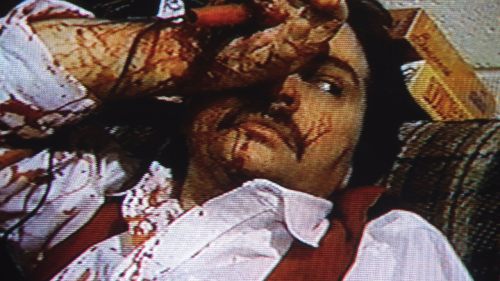The Rise Of The Female Horror Anthology
XX comes out Friday. Get your tickets here!
Women and horror have practically been synonymous on screen as far back as film memory serves, with women often playing the victims, damsels, or even the final girl. Off-screen that representation nearly vanishes, particularly in the director’s chair. Which is why this Friday’s release of the all-female directed horror anthology XX is such a breath of fresh air. For some, the concept is dismissed as a gimmick, but when half of film school graduates are female and the number of films directed by women doesn’t reflect that statistic, we know it’s anything but. The truth is that while XX doesn’t mark the first time women have directed anthology segments in film, very few have been given the opportunity to prove their mettle in a typically all-boys club. When some of the most memorable horror anthology segments have been directed by women, it’s a shame that it’s taken this long to unite their voices into one film.
Perhaps one of the most well-known and well-loved anthologies is The Twilight Zone. The television series ran 156 episodes long from 1959 to 1964, spawned revival series, a feature film, went into syndication, enjoys annual televised marathons, and caused even the most casual of TV viewers to form deep-seated memories of particular iconic episodes. Yet, in all 156 episodes, only one was directed by a woman, and it just so happens to be one of the best. Airing in 1964, episode 145 out of 156, Ida Lupino’s “The Masks” inverted the very idea of hiding one’s true façade behind a mask. While much of the episode’s effectiveness resides with the ghastly makeup effects, Lupino’s strong direction elevated “The Masks” from just being a heavy-handed morality tale. Her background in acting also elicited more out of her actors on screen. Lupino’s light touch and succinct style gives Rod Serling’s writing a fresh perspective. Her ability to tamp down the allegory and hone in on the human element allows for the final shot of the episode to deliver maximum impact on the viewer.
The only other notable credits for women when it comes to genre anthologies between 1965 and 2011 stems from two low budget affairs; a straight-to-VHS Charles Band production released in 1984 titled The Dungeonmaster, and a made for cable rock’n’roll riff on The Twilight Zone, otherwise known as VH1’s Strange Frequency, in 2001. In the former, Rosemarie Turko’s “Ice Gallery” stands out as visually arresting compared to the six other segments, although it shares the same tonal schlock as the rest. In the latter, Mary Lambert brings the same dark undercurrents and biting wit to her two segments that she displayed in Pet Sematary and Pet Sematary Two, though the film as a whole felt typical of cable production and very much of its time. Strange Frequency also came about when the popularity of anthologies had long since waned.
That seemed to change with the release of V/H/S and The ABCs of Death in 2012. Not only did both films reinvigorate the horror anthology, but the vast void of female voices in genre anthologies slowly began course correction. Roxanne Benjamin’s role as a producer on V/H/S set her down the path to direct her own segment on 2015’s anthology Southbound, which she also produced. Her segment, “Siren,” stands out narratively for its focus on the relationships between the all-girl band at the center. The female perspective offers a new variation to a familiar horror story saturated in remorse.
While Axelle Carolyn’s segment “Grim Grinning Ghost” stands out for being the only one go straight for the horror jugular in terms of scares in 2015’s love letter to Halloween, Tales of Halloween, she also spearheaded the project with co-curator Mike Mendez. Her love for both the holiday and her friends brought them all together for one of the most joyous horror anthologies ever created.
Though last year’s Holidays anthology was hit or miss in its segments, Sarah Adina Smith’s take on “Mother’s Day” touched on a familiar horror topic: the primal fear of giving birth and motherhood. Smith’s segment speaks to a not so distant history when women had little or no control over their bodies when it comes to pregnancy, and hits home in today’s political climate. The poignant message by way of Smith’s ethereal style makes “Mother’s Day” resonate deeply in a way that perhaps only another female could understand.
With the abundance of great horror anthologies available, it’s strange to realize that the amount of female voices among them is so few, and that it’s taken decades for that to change. Only within the last few years has any momentum occurred, culminating in one historic film releasing this Friday. It’s only the first step, though. When most anthologies thus far have attached well-known horror directors, it poses a valid argument: studios and production companies want safe bets. Names like John Carpenter, George R. Romero, Tobe Hooper, and countless others that have been dubbed masters of horror, who have proven the ability to draw in audiences. But the true safe bet remains in keeping the genre fresh by way of new perspectives and influential voices, and these ladies have shown they have that. I hope these women keep pushing forward in the industry. There are masters of horror among them, they just haven’t yet been given the chance to prove it.



